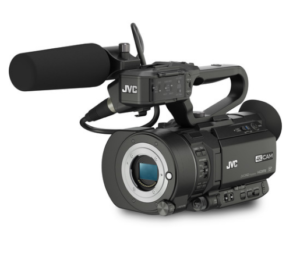Will Adams Blog
A Mellinial Creative Professional doing my best to follow Christ
I’m going to Israel!

Yup. In just a few days I’m going to be boarding a Plane to the Holy Land. How did this happen? Well I owe it all to my good friend and former colleague, Ben Greenhoe who works for Zondervan Publishing in their video department. He contacted me a few months ago and asked if I’d like to take a freelance job that would take me to Israel, Greece and Rome and be part of a crew shooting a Study with NT Wright. I of course said no, then I slapped myself in the face and said OF COURSE!
If you’re not familiar with him, NT “Tom” Wright is a former Anglican Bishop who is considered by many to be one of the greatest Biblical thinkers alive. He’s kind of a big deal. He’s written many books and his office smells of rich mahogany. I actually don’t know that last part for sure, but I’m just guessing that it would. My small group did a study on Romans that he wrote and I’m working on cramming as much of his literature into my brain before I go so that we can talk shop. He’s kind of a genius and I’m excited to meet him.

I leave this coming Sunday, June 28th and will return to Montgomery on July the 12th. In that time we’ll be visiting the major sights in Jerusalem and Nazareth as well as Corinth in Greece and Rome in Italy. I’ve never been to any of these places nor have I ever taken a trip quite like this one wherein we’ll be hopping between countries and taking footage wherever we go.
I am not a camera man for this event. I’m the audio tech. I’ll be holding the mic and making sure that the sound is not distorted. I find that sort of beautiful, because isn’t that kind of the job of Christians to be the mouthpiece of God and make it so others can hear him clearly? And if we’ve done our jobs right no one will even see us or think about us being there. I’m kind of the low man on the totem pole, but I’d make coffee for the crew if it got me a trip like this. I feel especially blessed to have this kind of opportunity and I’m hoping to be posting updates, photos, and maybe a few videos while I’m there, it depends of course on the availability of WiFi and our work schedule, so there are no guarantees, but check back here for updates as they’re available. Also, follow me on Instagram and twitter, both are @WilliamHAdams
Lastly, I want to ask for your prayers, not only for safety, but also that God would bless this project. I believe it will have capacity to speak some great truths to people and really bring scripture to life in a new way for those who are more visual learners.
Thanks for following and reading!
Ken Roach and Patrick Quinn
[podcast]http://www.podtrac.com/pts/redirect.mp3/https://www.williamhadams.com/wp-content/uploads/2015/06/episode-6-ken-and-patrick.mp3[/podcast]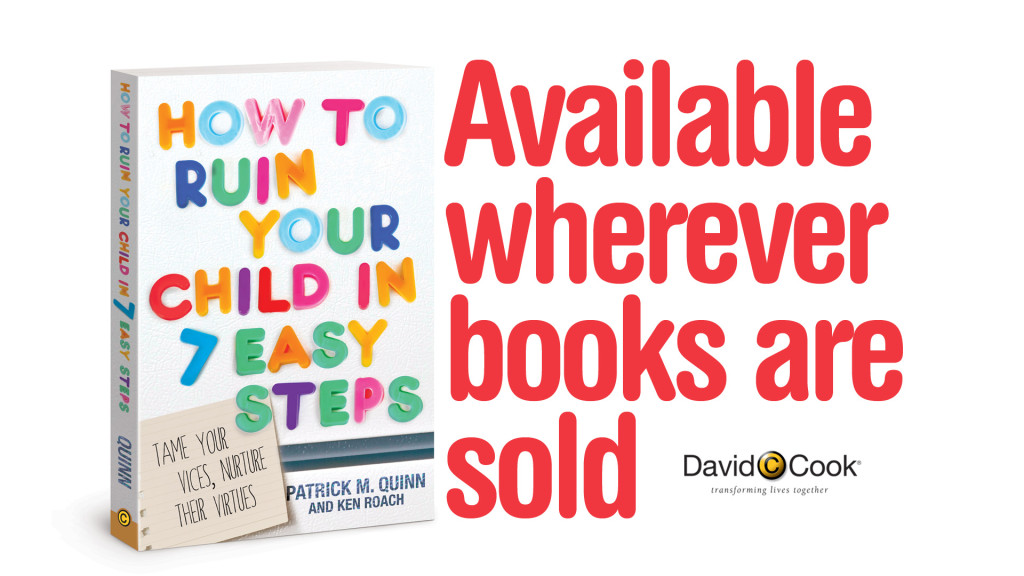
On this episode of the Brio podcast, I talk with Ken and Patrick about their new book How to Ruin Your Child in 7 Easy Steps. It’s a quirky look at the 7 Deadly sins and how to tame them in your own life while nurturing virtues in your children. The book is available now at many major retailers.
Tomorrow ain’t what it used to be: A discussion of the humanist themes in Disney’s Tomorrowland

Disappointment in Tomorrow
Listen, I didn’t expect much from Disney’s Tomorrowland other than it just being a fun movie. Unfortunately I can’t say that it was. It had fun moments, fun characters, and a fun premise, but the movie itself wasn’t that fun. How is that? I think I can sum it up in a few issues:
– Plot: the plot was weak, and it took almost 30 minutes to establish what was going on what the stakes were. There was also a huge error in logic of the whole thing that I’ll discuss later.
– The title/setting: only about 20 minutes of the film actually takes place in Tomorrow land, the titular location. The rest is spent in several car rides and a few action scenes as well as arguments between the three protagonists.
– The weirdness: Ok, having a little robot girl confess her love to a guy in his 50s as she “dies” is strange. It doesn’t matter if the character is actually 50 years old, we all know that the actress is 10 and it’s weird. Also, she’s a robot, we all just saw age of Ultron (another Disney property); robots can’t really die unless the Vision hacks their programming, causing them to be unable to upload their conscientiousness to the internet. (if you don’t understand that, what Rock are you living under?)
– the message. Like the final act of Atlas Shrugged, the film reads like a manifesto for humanism rather than a fun family film. It comes off preachy, which honestly is a comfort to me – until now I thought Christians were the only ones this bad at subtly embedding a message in a film. Many Disney films have a message to them, but the content of this film’s message is the biggest disappointment, and that’s where I’d like to spend the rest of the discussion
The Plot
The story of Tomorrowland is about a utopian city in an alternate dimension that was discovered/created by Tesla, Edison, Eiffel, and Jules Vern. (One of these things is not like the other…) The current governor of Tomorrowland is named Nix (played by the incredible Hugh Laurie) and despite the fact that apparently Tomorrowland was created in 1800s, it wasn’t beginning to be open to the public until the 1950s when a little robot girl named Athena was supposed to start recruiting geniuses to come to Tomorrowland and make the perfect society where they can just make sweet, sweet science all day long. Somehow this society has bypassed politics and bureaucracy – which apparently are the only things keeping us from developing faster-than-light space travel, immortality, and jet packs. (Not, you know, physics, and laws of nature)
Side note here: this is very similar to both the plots of Ayn Rand’s Atlas Shrugged and 2k Games’ BioShock which was heavily influenced by the former. In Bioshock, when a group of scientists are given free rain to do whatever they’d like in a secret, highly-advanced underwater city, the results were horrifying. I frankly think this is a far more realistic picture of this scenario if it were played out in real-life since real-life humans are fundamentally selfish and flawed.
The “T” pin pictured at the top of this entry, and featured heavily in the previews, was, at one time, intended to be a special invitation to Tomorrowland. Each pin is coded to a particular person’s DNA and it only works for that person. Athena (little, British, kung-fu, robot girl) was supposed to search out people who fit the profile of Tomorrowland; creative, intelligent, people. Only she was never allowed to complete her function because a young boy who would grow up to be George Clooney created a machine that could see the future and it predicted the end of the world, which for some reason made Nix exile George Clooney and destroy the pins, stopping people from getting invited because Nix believed that the people of earth weren’t worth saving since they were soon going to bring about the end of their own world. As such Tomorrowland is actually mostly unpopulated.
The first huge error in logic here is obvious: why would knowing the date of the end of the world stop Nix from recruiting geniuses, allowing Tomorrowland to fall into disrepair? Even if he believes that the pending end of the world is going to be the fault of its occupants, why would he stop bringing the world’s best and brightest to Tomorrowland instead of continuing to use it a cosmic bomb shelter for those who are smart enough to help Tomorrowland? Even someone as heartlessly elitist as Ayn Rand recognized the value in gathering up the exceptional people into their own, hidden society in her magnum opus. Regarding governor Nix, for the leader of the smart people – he’s not that smart.
Also, why did their adorable recruitment robot need to be programmed for advanced hand to hand combat? And why is she apparently way better at it than any other subsequent robot they made, even the robots made for the express purpose of security and enforcement?

Secular Humanism
Disney morals are often secularized versions of Biblical principals, that’s why so many people can identify with them. Christians like them because they see scriptural truths. Others like them because the virtues of the faith are undeniable by reasonable people. Usually, a Disney film’s “moral” isn’t telegraphed in the way that this film’s message was. The message of the movie was explicitly stated several times by several characters in the film. Basically its this: If man didn’t have politics, (and one might infer, religion) and maintained a positive attitude toward the future, then he could progress far beyond what most would believe possible. We could then solve issues like the energy crisis, climate change, the nuclear arms race, famine, obesity, hunger, and on and on and on. These things are actually listed in the film at different points.
On a surface level this is simply optimism, and while optimism is an expressed theme of the film, this thinking also has other implications. First it implies that most men are basically good at their core, and these good men utilizing science and creativity are the answers to the world’s problems. Also implied is that the progression of science and creativity is being held back by foolish men that should be left out of this conversation – these would be the exception to the “men are basically good” rule.
While Christian Humanism has it’s place, this view is definitively secular humanism: Man can improve himself by himself, if we could just get rid of those few unusual men who stand in our way. There is no power higher than science, human creativity, and reason. People coming together and thinking positively is the answer to the worlds problems, while negative thoughts being broadcast into our brains by the few, unreasonable nay-sayers is the reason we have any problems in the first place. People who believe that inevitable dangers lie ahead for the human race have simply given up. People who try to warn the world of impending doom are just causing a self-fulfilling prophesy, and if those people would stop broadcasting their warning then people would all get along better (sounds a lot like an indictment on Christians, warning the world that the wages of sin is death.) The absolute worst thing you can do is give up hope in humanity.
I recently had the honor of hearing the message from Alastair Bragg (in fact I briefly mentioned it on the most recent episode of the Brio Podcast) In which he mentioned that the first reality that must be faced before one can understand the gospel is the far less cheery prospect that we’re all sinners, we’re all doomed, and we’re all dying. No amount of positive thinking, no amount of our own achievement can save us. And as for the people who have given up, those who have lost all hope – they are the exact people for whom Christ died.
Also, even among the good guys Tomorrowland promotes an eleteist view of humanity; while many humans are smart, creative, positive thinkers and therefor humanity’s greatest hope – others I guess, are in the way? Or are at least useless. This is the exact thinking that leads to the kind of political and ideological disagreements that the film is railing against. You’re still creating an “us” (the smart people) and “them” (the not smart/creative people) which historically never works out. This is an odd choice in an otherwise totally humanist film as it seems they’re saying that certain men can save humanity, while others are just taking up space and headed for destruction. It seems that they can’t escape the reality that we are self-destructive, but the story tries to convince us that only some of us are actually doomed. This is totally counter to Christian faith as Christ followers we believe that we are all equally sinful and we are all equally worth saving.
The fact is that if you believe what this film is trying to sell you, you’re missing out on a fundamental, foundational truth of humanity and that is the depravity of man. A hard core Calvinist (which I am not) would stand up and say amen right now. But regardless of one’s theology all Christians have to believe that we needed Christ to come save us because we are sinful and without Him and Him alone, we are doomed. I’m all for a film with a Christ figure **spoilers ahead** and there arguably is one in this film, though it’s coupled with the weirdness of the man-on-little-girl-robot love-declaration… ultimately this Christ figure is a flawed example because it’s a robot, and therefore a creation of man – showing that once again, man is his own greatest hope. This isn’t just unbiblical, it’s totally counter to the Biblical narrative. I shouldn’t have to tell you that in scripture we’re told repeatedly that we’ve all sinned and rebelled against God, that the wages of that sin is death (ergo we’re all doomed) but the gift of God is eternal life. Nothing else can supply that. Sorry if that isn’t “positive” thinking enough for you Tomorrowland fans.
Update:
In a post on this review, I made the statement that I believe this theme is one of the reasons why this film bombed, and someone (who no doubt didn’t actually read this entry) commented that the theme is present in Star Trek, so it’s not possible that the theme had anything to do with the film’s poor reception. I agreed with him Star Trek has a heavy secular humanist vibe to them, but I pointed out that arguably the most secular humanist of the films was the first one, which almost killed the franchise. And arguably the least secular humanist of the films is the 2009 reboot, the most successful of the films. I do want to say that even thought I do believe this played into why this film wasn’t a success doesn’t mean that secular humanism is a death sentence. I think it is for Disney films however, because arguably the more clear a Biblical truth there is the more successful those films have been. IE Lion King: your father died for you, you squandered it, then he called you back to take your rightful place as being his image to a lost world – and it was the most successful home video release of all time.
It’s not all bad
First I’d like to say that secular humanism is a shade closer to Christianity than many worldviews such as naturalism, existentialism, state-ism, and most other atheist world views are not only far less positive, they also elevate other things above humans, such as nature, knowledge, or government. Arguably Jesus was a humanist – he promoted the idea that human life is sacred and went as far as to die for all men so that they wouldn’t have to go to hell. But this is still different from a secularized view of humanism wherein humanity is the highest force. I also think this is why some nominal Christians may fail to see the humanistic values, because if Christ isn’t the at the absolute center of your worldview, but you like all the “love” and “community” and “social justice” parts of Christianity, then you are basically just a secular humanist. If you think that the goal of Christianity is to get your “best life now” in the material sense, then you are basically a secular humanist and a capitalist, with a dash of optimism-as-religion.
Really the most positive thing in this film is found in a thorough discussion on eschatology – that is, the study end times. Many Christians, especially those in the older generation who hold to a highly traditionalist view of their faith, have adopted a “The end is near” worldview and use that as an excuse to disengage from the larger culture. These people may have a great deal to offer, but they’ve given up because in their view, if Jesus is returning soon it’s just better to stay out of things until he comes back to make everything right. Not only is this a crappy way to live, it’s totally non-biblical.
Setting aside the question of whether or not we’re living in the end times (which is at least debatable) we’re told by Jesus himself that when he returns we are to be about the Father’s business. In other words, we’re not supposed to give up – ever – regardless of how near or far we believe his return to be. This is the greatest truth that can be mined out of Tomorroland. And in my opinion it almost makes the film worth it, as it is such a pervasive issue in the church. I only wish that the other philosophies displayed in the story were less overt so that it was harder to miss this point: Don’t give up. According to scripture things are going to get worse before they get better, but we’re never told that means the church should withdraw. As long as we’re on this earth (that one’s for you hard-core rapture people) we’re supposed to do the work of the church and we’re never given any instruction to give up or withdraw regardless of what is happening, quite the opposite, we’re told to be instant in-season and out of season. We’re told to love one another as Christ loved the church.
At the same time we are told that there will be wars and rumors of wars. We’re told that there will be sickness and famine and that things are going to get worse. To ignore this is to ignore scripture. To act as if we can beat the scripture prophesy with positive thinking, it might sound noble, but you cannot argue that is scriptural. If we could save ourselves from destruction then we wouldn’t need Jesus to return.
Is it worth seeing?
In my opinion, that’s a solid No. It might be one to rent from redbox when there is nothing else and you’re just really bored. It is slightly entertaining at moments, but the plot leaves something to be desired, and the worldview is not consistent with itself. Perhaps the film’s greatest offense to me personally is that because of its poor box office reception, Disney cancelled its sequel to Tron (it’s only non-pirate, non-fairy-tale live action property that hasn’t bombed in the last ten years) So you can expect more remakes of classic Disney animated films into live action films and yes, a fifth pirates movie. Because of films like Tomorrowland, John Carter, and Lone Ranger, we’ll likely never see another Tron film because Disney has, ironically, given up on it. TRON Legacy had a considerable Zen/Buddhist slant to that, but if you actually look at the plot, there’s a fabulous Christ story in the midst of it that is hard to miss – which is why I enjoyed the film and was sorry to see the sequel get cancelled the week that Tomorrowland failed to perform on one of the worst memorial day weekends in recent box office history.
Update:
Someone commented, “I don’t think it was humanist. If anything its misanthropic” not sure if we watched the same film – the bad guys were misanthropic, the good guys were totally “positive thinking” humanists as evidence by the end wherein they were gathering the best of humanity to save humanity.
Greg Bandy
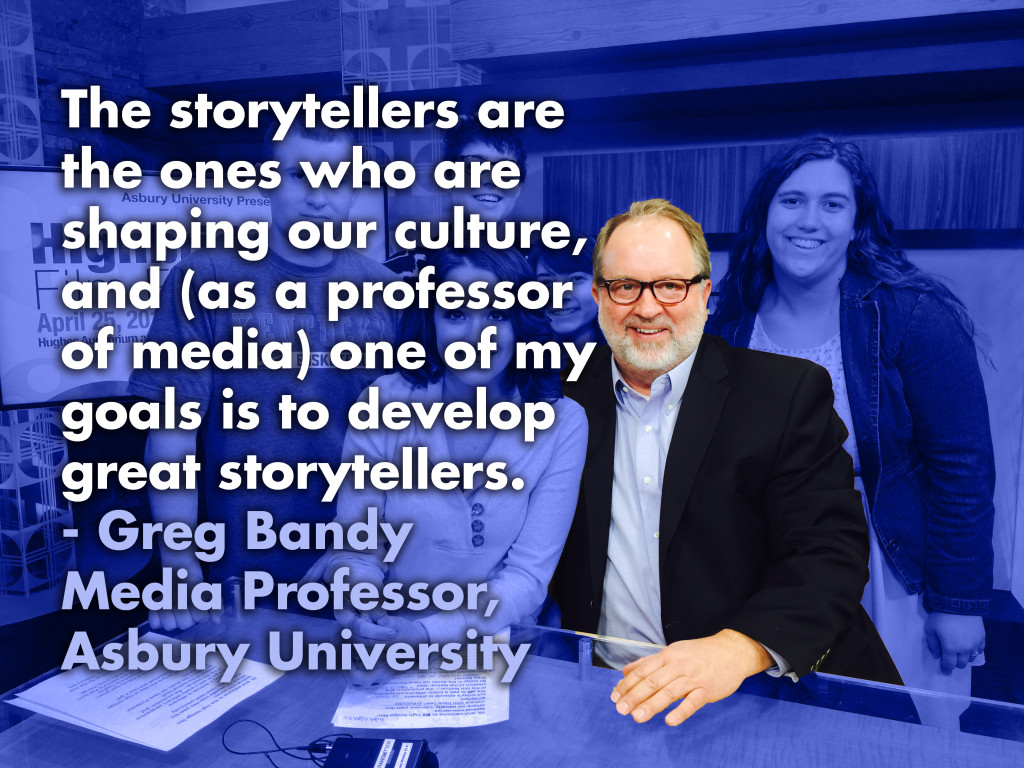
Prof. Greg Bandy teaches media at Asbury U. On this episode he and I talk about the importance of story and how it shapes out culture as well as his projects the Hound of Heaven and sheisnoble.com
[podcast]http://www.podtrac.com/pts/redirect.mp3/https://www.williamhadams.com/wp-content/uploads/2015/05/episode-5-greg-bandy.mp3[/podcast]
What camera should I buy for my church?
I get this question a lot so I thought I’d write a blog entry to explain it.
Short answer: It Depends.
you can ask this question to 20 video guys and they will give you 20 different answers according to their philosophy on what is most important. To me it often comes down to a debate on these four issues: Price, Quality of Image, Features, Ease of Use. There is no camera that falls perfectly in the center of this Venn diagram. 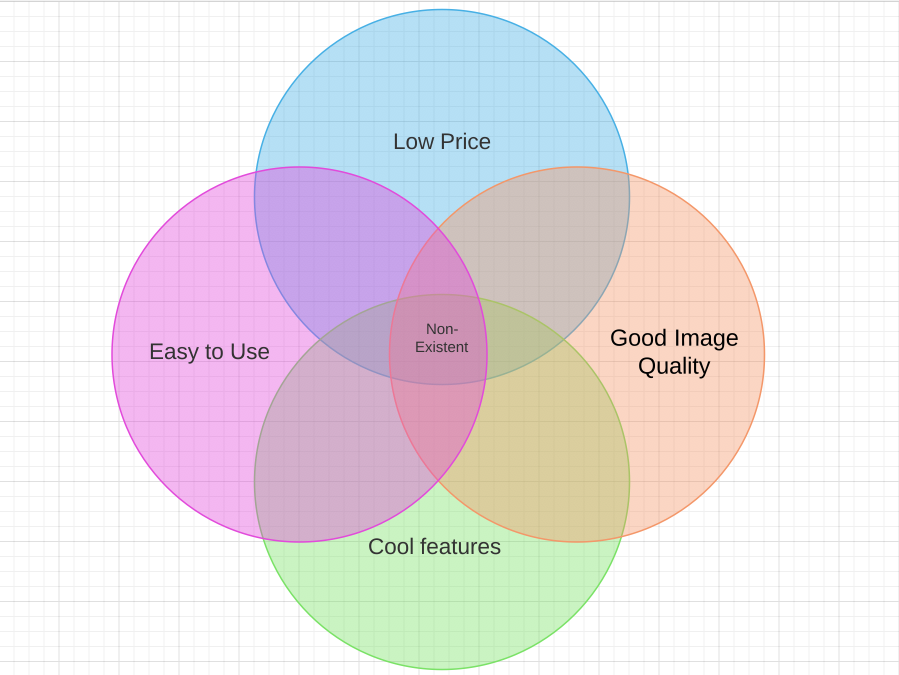
So you have to make a choice, do you want cheap? Do you want easy? Then you may not end up with anything that has very good image quality or ease of use. Do you want cheap, but don’t mind it being hard to use? Then you might be able to get something a little better looking, but be prepared for the learning curve if you’re not a pro already.
The DSLR dilemma
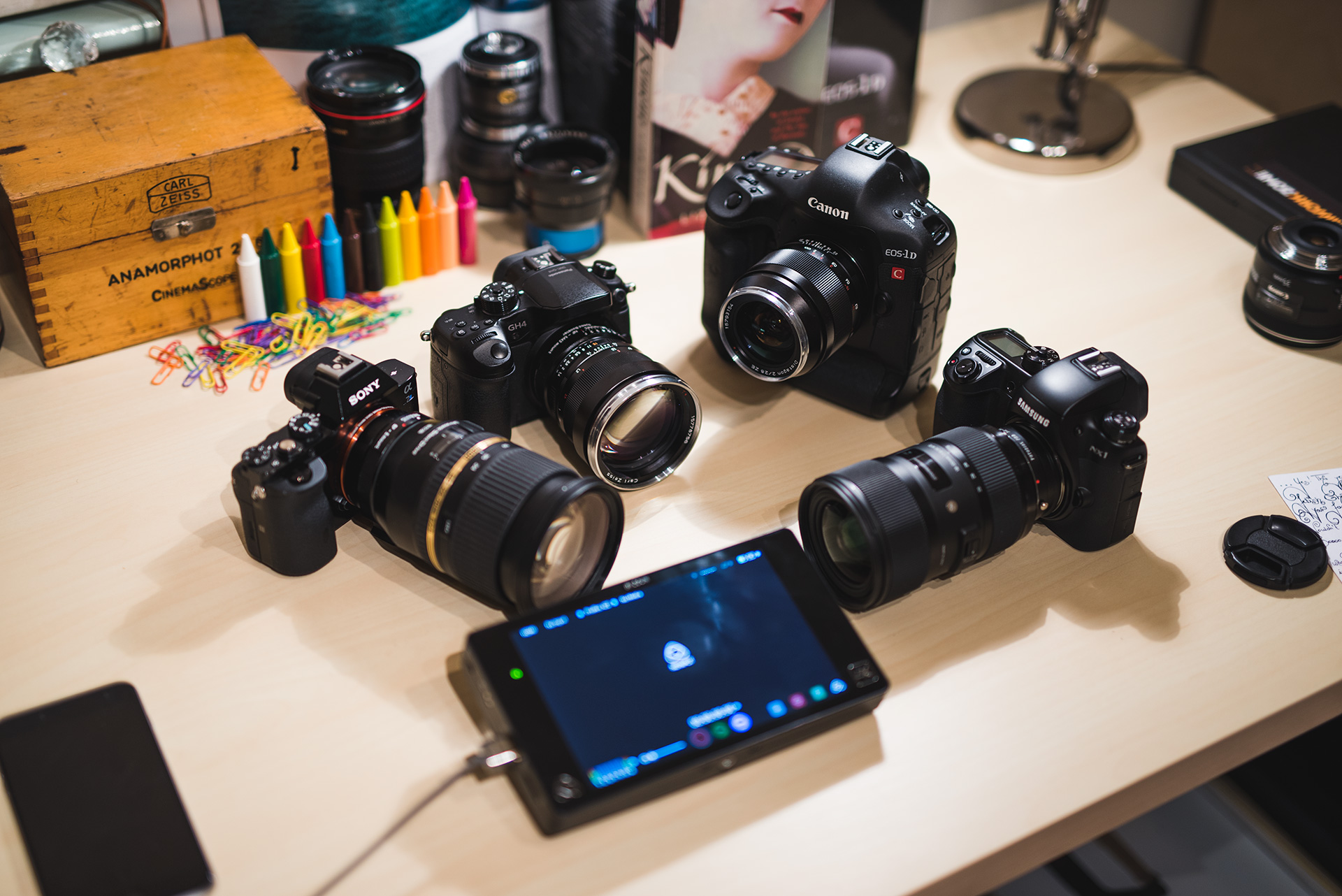
Many of the coolest looking videos coming out of churches these day were shot on a SLR – that is, a fancy photo camera that also shoots video – or a Mirrorless camera with the same body type as an SLR. DSLR stands for “Digital Single Lens Reflex” camera. The “Reflex” refers to the fact that the image you’re looking at through the viewfinder is reflected from the lens, through a penteprism to give you the most accurate image to what your camera is actually seeing. Recently “mirrorless” cameras have become a popular option; they remove the mirror and have an electronic viewfinder which gives the option of showing readout info over the image that wasn’t available to traditional SLRs. For the sake of this entry I’m going to group both mirrorless and SLR cameras together and refer to them both as DSLRs because they are mostly the same kind of camera. DSLR camera rigs usually result in amazing image quality, and can be relatively affordable but they can require some know-how to get them to look (and especially sound) as good as they can. There are a number of challenges with DSLRs:
- Rolling Shutter – DSLR cameras have what’s called a “rolling shutter” this means the image is being refreshed from top to bottom instead of all at once (which would be “global shutter”) This effect causes images to distort when the camera is panned or zoomed quickly, or when something moves quickly past the camera, resulting in images that look like the one below. Rolling shutter is worse on some cameras than others. Most Nikon DSLRs have very bad rolling shutter, much worse than canons which is part of the reason most people won’t be buying Nikon cameras for video. The more popular cameras such as the Canon 5D, 7D, T2i (and higher), and the Panasonic GH4 have slightly better rolling shutter than most cameras, but don’t think that a higher price brings less jello-frame. Sony’s A7s which is in the higher end of this category has terrible rolling shutter, though otherwise it is a great camera. Rolling shutter can be easily avoided with the use of shoulder mount rigs, stabilizers, and good shooting technique, but it is a factor that pretty much all DSLR users have to contend with to some degree.

- Sound – the issue with sound on DSLRs is basically boiled down to the fact that no DSLR-type cameras come with professional audio inputs. Many of them don’t have audio inputs at all. This is one of the problems that makes DSLR shooting quite complicated at times. The built-in mic is basically useless for anything but reference. If you use the on-board audio input you’ll still often end up with sub-part audio as it is not balanced and many cameras have an auto gain or noise reducing ‘features’ that actually make it worse. The most common way around this is to record using an off-board audio recording device. In the past few years there’s been an explosion of audio devices for this purpose; some of which even mount directly to your camera. After recording this audio you then have the added step of syncing your audio and video – a process that is thankfully now automated in most editing programs, but still takes time.
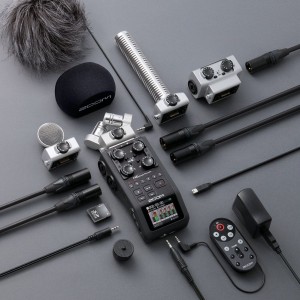
- Ergonomics – DSLRs are not intended for long walk and talk video shooting. As such it’s almost impossible to hold the camera steady without investing in some kind of rig that puts the camera’s weight on your shoulder. This adds to the price, sometimes offsetting the cost-saving potential of working with SLRs to begin with. Also these really don’t solve the issue that many of the buttons and features you’d like quick access to, are often buried in on-screen menus, rather than being available at the flick of a switch. Rigs are often a bandaid and none of them turn the camera into a shoulder mounted camera, they just improve slightly on its handling – which brings me to my next point…
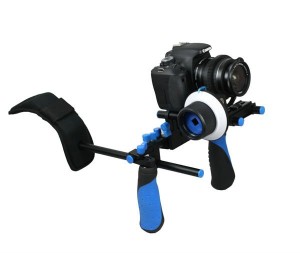
- Rigs – as mentioned above, DSLR owners will usually invest in camera rigs that help with the ergonomics, but they often have to take into consideration mounting an audio recorder, a shotgun mic, a electronic view finder, a counter weight, a external video recorder, follow focus, matte box, tripod adapter plate, grip out riggers, top handles, cages to protect your camera, and a battery back to power everything. This gets very cumbersome and makes shooting much more complicated every time you set up and tear down.
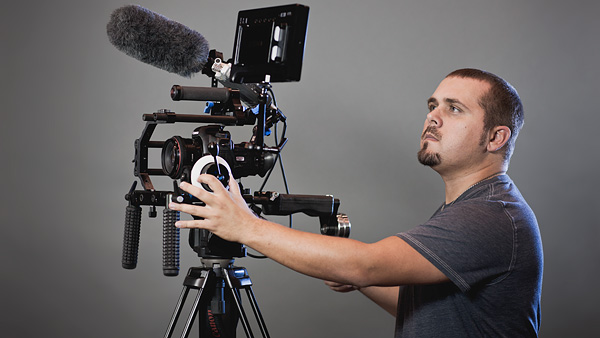
Traditional video cameras come in two flavors: professional and consumer. While most retailers make the distinction of professional based on the audio inputs, I believe that a professional video camera should also either have 3 CCD chips or at least a 1/2″ CMOS chip. Anything less than that usually results in lower image quality than most pros would stand for. Pro cameras should also have removable lenses. By the way, if anyone ever uses the word “prosumer” (a mash up of pro and consumer) to describe a camera – don’t take that person’s advice, that’s what amateurs call their consumer equipment to make it sound better. Plus the stuff that usually gets called that is often the worst of both worlds; not great price, not great quality.
To get the same image quality out of a pro video camcorder will cost you exponentially more than a DSLR, but video cameras are far easier to use than DSLRs and you can get much better sound quality out of them without buying any external recorders. Many of the features that you have to buy to add on to DSLRs are built into traditional video cameras, such as electronic view finders, ND filters, and shoulder mount-ability. Higher end video cameras often come with lots of cool features that really give you that “wow” factor.
How much should I spend
As much as you can. That may sound frivolous, but I mean it. I’d say spend at least a dollar for every person in your church, but that should be a lower limit. Why spend money on cameras? Because we’re telling the greatest story ever told! When people see work that looks really low quality, they’re not going to take it seriously and poor quality doesn’t glorify God. At the same time I know we don’t have unlimited budgets so I’ve prepared a range of cameras from $500 to $15000 for you to look through.
So, what camera should I buy?
I’m going to give you a few different recommendations and I’ll be the first to say that these may go out of date, but I’ll also say that not all technology advances the way phones, tablets , and computers do. Many people still use the same cameras they bought five years ago and are happy with the results. Cameras tend to go in at least 2-5 year cycles, so if you buy a camera that is a newer model it will be up-to-date for around 3 years on average and could be functional for up to ten years depending on the model. (Unlike your phone which will be out of date next year or your computer which was out of date by the time you finished this sentence.) I’m going to give them a rating based on the four factors I mention above. The rating is on a scale of 1-10, ten being the best. I would like to clarify that a rating of 10 doesn’t mean that it’s the best there is, it just means that among the cameras that I’m discussing it’s among the best. So here are a few recommendations.
Bear in mind that this list is primarily for Field cameras, that is, cameras that you’re going to use out and about – not for recording services. If you want to record services, I’ve made a note of the two cameras on this list that will work for that purpose, but if you’re really wanting to knock that out of the park you’re going to have to drop some major coin on at least three cameras, a switcher, and several expensive pieces of infrastructure, so this list isn’t addressing that set up.
1 – The Cheap, and Easy option
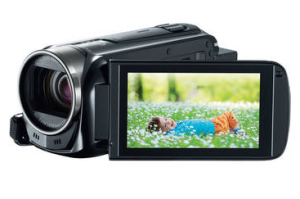
The Canon Vixia HF R series – Cheap, Easy, but bad image quality (especially in low light) and very few useful features.
Picture Quality – 1
Ease of Use – 10
Features – 3
Price – 10 ($400-$500)
I debated even putting this one on here, but often times I get asked, “what’s the cheapest thing you’ll recommend?” The Vixia series is the best consumer series of cameras. You can actually spend up to $2000 on a high end vixia, though I don’t recommend it as you can get a better camera for that price. The HF R series is constantly changing. At this point I’d recommend the HF R52, but really any Vixia camera close to $500 will be similar; very easy to use, very affordable. The image quality will be acceptable for many applications, but it will look like consumer video. Also the camera itself looks like a consumer video camera, so don’t expect people to take you seriously while you’re using this thing.
2 – The inexpensive, good image quality option
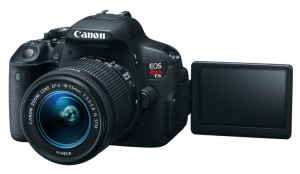 The Canon T5i – Great image quality, Inexpensive, decently easy to use, but lacking in features like audio inputs
The Canon T5i – Great image quality, Inexpensive, decently easy to use, but lacking in features like audio inputs
Picture quality – 7
Ease of Use -5
Features – 3
Price – 9 ($700 with a lens)
Canon makes a load of great consumer model DSLRs that do video well. The T5i is one of them, but really if you get a T2i or higher you’re getting basically the same camera with some minor feature enhancements. Its audio feature set is limited and options with frame rates are also limited. The picture quality is awesome in day light, but can get a little rocky in lower light situations. While it is easy to use for most, to take full advantage of the camera’s capabilities will require some knowledge. Having said that, it’s possible for an amateur to get a really good image out of this camera with a limited knowledge and some tutorials online. The biggest disadvantage is audio. If you’re wanting to capture audio, this is not your camera. You will need a seperate recorder such as a Zoom H4n or Tascam’s DR-40. Another disadvantage is the record limits. The camera can only record up to around 12 minutes at a time. Shooting film-style, this isn’t a big deal, but longer form programs make this camera useless, unless you hack the firmware with something like “Magic Lantern” that adds several missing features, but will void your warranty and could mess up your camera since it is a share-ware program. Also there are many features that professionals look for that won’t be included such as higher frame rates, zebra striping, or professional video outputs. To get this most out of the camera you’ll also want to spend more on lenses. The cool thing about buying lenses for the T series is that you can get glass that will fit higher-end cameras (as long as you get APS lenses and not APS-C lenses). Lenses (pros often just call them “glass”) are a good investment as they’ll outlast your camera and can be used across many different kinds of cameras given the right adapters.
3 – The Easy, good feature set option
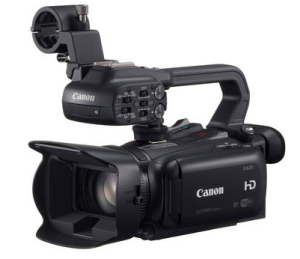
The Canon XA35 OR XA30 – Very Easy to use, good feature set, mediocre image quality, medium price
Picture Quality – 5
Ease of Use – 7
Features – 5
Price – 5-6 ($2000 for XA35 $1500 for XA30)
This is most often the first camera I recommend. While the image quality is not stellar, it’s still better than most consumer cameras. It has professional audio inputs (Two XLR plugs) and it has a decent size sensor. It also has professional exposure settings. While it is easy to use, it’s not stellar at anything – the price for quality is just OK, the feature set is only OK. It’s a very solid camera, but it isn’t an amazing camera. With no removable lenses and no high frame rate features, it gets the job done, but won’t wow anyone. Having said that, it’s more than enough for many churches and will give a boost in image quality and audio quality over other options, so in many ways its the closest thing to being better of both worlds, though it’s far from the best.
XA30 vs 35 – so what’s the difference between these two versions of the camera? (aside from $500) The 35 comes with professional HD outputs this is only necessary if you’re doing a multi-camera set up and live switching. I mention this because if you ever plan to do a multi cam set up in the future you should spring for the XA35 because it will leave you more flexibility for that.
4 – The low-price professional option
The JVC GY-LS300 and Panasonic Lumix G Vario 14-140mm – It’s got some cool features, pretty great image quality, decently easy to use, but it ain’t super cheap
Picture Quality – 7
Ease of Use – 4
Features – 7
Price – 4 ($2600+500 lens, $3100 )
Just to prove that I’m not a total Canon fan boy, I’d like to note that my first real professional camera that i’m recommending is a JVC. This Camera has the same size sensor as much higher end cameras. With professional audio inputs, it’s the full package. It also has removable lenses, but unfortunately JVC doesn’t make lenses so you’ll have to purchase a lens separately. Any of panasonic’s micro 4/3 power lenses SHOULD do the trick, but be prepared to return them if they don’t From the research I’ve done people say they work, but any time you’re working with two different brands, you’ve got to be flexible. With an adapter you can even make this guy take canon lenses and there are lots of options that open up from there, but if you want good cinema lenses Rokinon’s micro 4/3 lenses are pretty solid. It also comes with a shotgun mic and can be shoulder mounted out of the box. In some ways I’d say that this guy is the best for the money. It’s the most price/image quality you can get at this price point. This is another one where investing in good lenses is a necessity if you want to take full advantage of what you’ve got. Perhaps the greatest strength of this camera is that it will work well shooting live events as well as field work. The rest of the cameras below are great for field work, but wouldn’t really work in event production, especially in a multi cam situation. This guy (and the XA20 above) are really the best on this list if you’re wanting to capture worship services, especially if you want to do it from multiple angles, but that’s another blog entry.
5 – the cheapest way to 4K

The Panasonic GH4
Picture Quality – 8
Ease of Use – 3-4 (depending upon what you add to it)
Features – 5-8 (depending upon what you add to it)
Price – 3-5
camera only ($1200, rigged out $3,500+)
Ok I do get questions about 4K – what is it? Do we need it? Should we spring for it? 4K is a standard that’s approximately 4 times High Definition video. It is absolutely not necessary and I doubt that it will ever reach the market saturation that HD has because it only really makes a difference if your screen is over 60 inches. It’s kind of a digital version of film (film lovers, please don’t get onto me for saying that) Why would you want 4k then? For a few reasons: Capturing video in 4k gives you lots of options in post with stabilizing, cropping the image to get a new angle, and having the highest possible quality and color info coming into the edit. It also does ensure that if 4k does take hold in the market you’ll have footage that’s ready for it. It also just looks great; if you can afford to go higher quality, why not? If you ever think you might want to show your work in the real movie theater I’d recommend shooting and editing in 4K, but if you’re wanting to get to that place you don’t need to be taking my advice, you need to be going to film school. One consideration to take with 4K is the fact that it does take some substantial editing hardware; a high end work station and fast hard drive to support the higher bit rates as well as some good monitors to be able to see all the detail.
6 – The simplest truly high quality fella
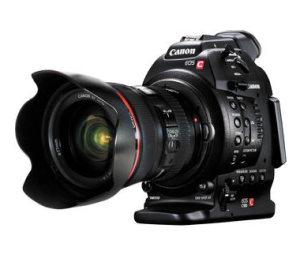
The Canon C100 has great image quality right out of the box, with a big sensor and a great feature set, but it is down right expensive.
Picture Quality – 8
Ease of Use – 4
Features – 7
Price – 3 ($6000 with lens)
Canon’s “C” series has some of the best cameras available, but all of them come at a price premium. This is the first camera on this list with a “Super 35” sensor. This is the largest sensor you can get short of “full frame” and if you’re getting really serious about your video I wouldn’t go any smaller than this. The C series cameras all have amazing image quality that doesn’t require much tampering with in post, but the cameras tend to be awkward to use ergonomically. With XLR ports and the ability to tack on canon glass, this guy is the littlest brother in the C series, but he is by no means a low end camera. The C stands for Cinema, so basically you’re getting a digital cinema camera. I should specify that in this case I’m talking about C100 NOT the C100 mk II which is a better camera, but also carries a $2k mark up. The original C100 is still in production as of the writing of this blog, but it may go out of production soon, in which case I’d still recommending seeing about getting one used or refurbished as it is mostly the same camera at a much better price.
7 – The classic DSLR option
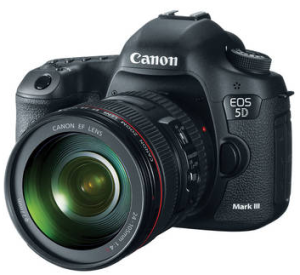 The Canon 5D mk III – If you want just plain amazing video without having to work too hard, here it is.
The Canon 5D mk III – If you want just plain amazing video without having to work too hard, here it is.
Picture Quality – 9
Ease of Use – 3-5 (depending upon what you add to it)
Features – 3-5 (depending upon what you add to it)
Price – 2-4 ($3000 with a kit lens – $8,000 fully outfitted)
Here’s the deal: The Canon 5D is a truly amazing camera. Some would say it’s the best option. I have friends who swear by it. It will never be beaten in their eyes. Is it the best camera there is? Not at all. Does it produce phenomenal images? For certain. An episode of House M.D. was shot with nothing but canon 5D mk IIs. There are even shots in Marvel’s avengers that were taken with this guy. He’s a beast. He’s an amazing camera. However, without investing a considerable amount of cash in lenses, rigs, external recorders, and other features, you’re never going to get the kind of results that are possible with this camera. You can just spend $3k and you’ll get a camera capable of taking really great images, but to make this camera all it can be, you’ll need to spend another 2-5 grand.
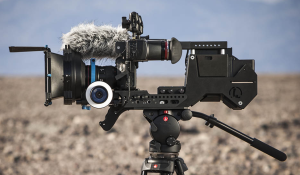
What makes it so amazing? It’s the first camera on this list with a full-frame sensor. Actually it’s predecessor, the Mark II was the first full frame camera capable of video that cost less than $50k. It started the large-sensor revolution in video cameras. Full frame means that it’s equal to the size of a 35mm film exposure. What that means is that it takes less light to get a clean, smooth looking image, it also means that it doesn’t take much work to get that really cool looking bokeh (the cool shallow-focus backgrounds we all recognize as a component of cinematic, professional looking images). Finally a large sensor allows for you shoot wider angles, so you can get those big establishing shots more easily.
What are the downsides? The 5D cannot record more than 15 minutes without either hacking its software (using magic lantern) or adding an external recorder. For most film-style shoots this is fine because it’s very rare for a single shot to go on more than a few minutes, but if you’re trying to record an event, it’s a big limit. Also, as with most DSLRs the audio options are pretty limited and without hacking the software you’re stuck with an irritating auto gain “feature” (which can be disabled on the less expensive GH4) Also as with all DSLRs it requires a rig if you’re going to go hand held, as the ergonomics are not built for video.
8 – The best DSLR option
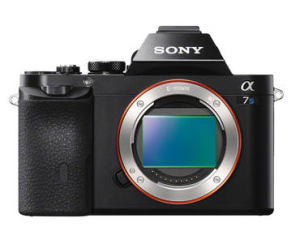
The Sony A7sii -The best all-around if you’re going to go with an DSLR rig.
Picture Quality – 9.5
Ease of Use – 3-5
Features – 4-6
Price- 2-4 ($3.5K with a lens – $8,000+ fully outfitted)
While not technically an SLR (it doesn’t have a mirror) it retains the popular SLR form factor and is, in every way, an equivalent to or better than any other full-frame DSLR camera. To canon fanboys this may be controversial, but objectively the A7s is a better camera than the 5D if only for two reasons: the A7s has phenomenal low-light performance. The 5D has really good low-light performance, but the A7s can shoot in near darkness and still get a usable image without much noise. The other reason is that Sony has a pretty affordable add-on option ($700) that adds XLR ports to the A7s. The original A7s is cheaper than the A7sii, the main two differences are the recording capability and the stabilization. The A7s shoots in 4k, but only the A7sii can record in 4k on board. For the original A7s, 4K recording requires a separate recorder. The other difference between the the original A7s and the A7sii is the biggest downside to the A7s; it has notoriously bad rolling shutter, making it a poor choice for high-action shooting and almost impossible to use handheld without some kind of stabilizing rig. This is mostly compensated for in the A7sii by adding image stabilization to the sensor itself allowing for two-stage stabilization, both in the lens and in the sensor. This isn’t perfect, but it allows for much smoother images and greatly reduces rolling shutter. A small downside to both the original and the A7sii is the fact that because it is a Sony camera it uses Sony lenses (which are just ok) but again a lens adapter can allow it to use canon lenses. As with all other DSLRs you can just buy the camera and the lens and start shooting with it, but to get the full use of this guy you’ll want to invest in lenses, LUTs, and other add-ons, which means that it is not very easy to use to it’s fullest capabilities.
9 – A truly professional 4K Camera with amazing features
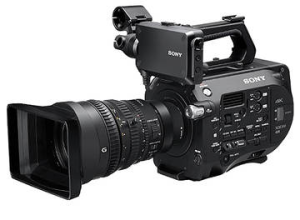 The Sony PXW-FS7 – A truly incredible camera, and a price that may seem high, but is low for what you get.
The Sony PXW-FS7 – A truly incredible camera, and a price that may seem high, but is low for what you get.
Picture Quality – 10
Ease of Use – 2
Features – 9
Price – 1 ($10,000 with lens $15,000 fully outfitted)
This is the camera that my current place of employment uses as our standard field recording tool. I love this camera. It features a super 35mm sensor. It records in 4k natively. It can take up to 4 XLR inputs (with an available extension from Sony) and is shoulder mountable right out of the box. Sony offers several great add-ons that enhance the already robust feature set of this camera such as adding professional battery mounts, 12G SDI outputs, onboard Pro-res recording, off-board RAW recording, more flexible rigging options and others. My favorite feature of this camera is the over-cranking. It can shoot up to 180 frames per second continuously resulting in really smooth slow-motion. It also can shoot in S-Log 3, which results in a really high-dynamic range image than can be brought into color correction and tweaked to look like film. To use this camera you need to spend a considerable time learning it, even if you’re a professional I recommend taking an online class to learn how to utilize this camera best. LUTs and color-correction would also be good to study-up on. This guy is not for amateurs or hobbyists. Canon’s C300 Mark II is in a similar category as far as feature set, but starts at six grand premium over this fella and doesn’t have any specs that rank higher. Canon fanboys will be angry at my for not including the C300, but to me it either needs to be full-frame or come down in price to have a place on this list.
10 – (BONUS) The One Peter Jackson Uses
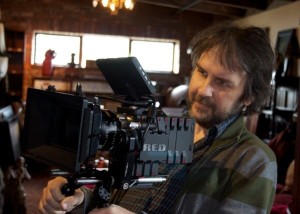
RED EPIC – I just wanted to mention the RED camera
Picture Quality – 20
Ease of use – 0
Features – 20
Price- 0 ($50,000)
RED is a camera company that was founded by the same guy who owns Oakley sunglasses. They have several camera models now, but the Epic is the one worth mentioning. It is what was used to shoot the Hobbit Trilogy among others. While digital hasn’t cought up with film, this is the closest it comes. It shoots in 5K and results in images that most people can’t distinguish from film. As far as digital cinema goes these guys are also very affordable even at their $50k price point. I don’t have to tell you they look good, go watch the Hobbit.
Lenses
Before I wrap this up I want to mention lenses for a moment. the best camera can’t produce great images without great lenses. Sony, Panasonic, Canon, and others each have their own standard of lenses. In addition there’s the PL standard which is used for cinema lenses. The option that is going to give you the most flexibility (both in price and in number of lenses) is Canon lenses. No matter the camera, you can find an adapter that will make your canon lenses fit to it. When you buy canon lenses make sure they’re full-frame or APS lenses not APS-C. This will give you more flexibility as you move up the ladder and generally these are going to be better lenses anyway. Rokinon makes a very affordable set of cinema lenses that result in some great images for an affordable price. On the higher end, Zeiss makes some great glass that fits canon which are just incredible. Whether you start with a T2i, GH4, or A7s I recommend investing in canon glass, because even if you eventually move up to a FS7, a C300, or even a RED EPIC, you can use that same glass on any of those higher end cameras.
Good Luck
Researching for a large purchase of any kind is hard work, and you always run the risk of something newer and better being released as soon as you purchase your new piece of equipment. If you have any questions feel free to comment below – I may have left something out, or I might be able to clarify it for your specific needs. Blessings!
Tim Thompson
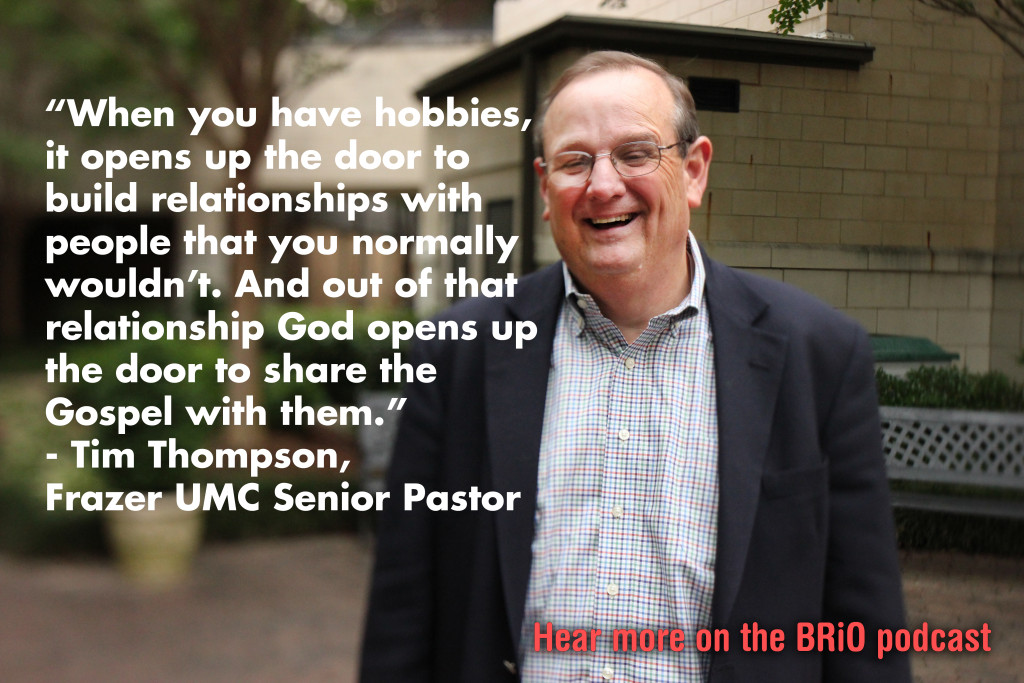
Tim Thompson, pastor of Frazer UMC here in Montgomery Alabama. We had a great time talking over this episode. Tim tells his faith story and we talked about baseball cards, organic vegetables, and the importance of hobbies and community.
[podcast]http://www.podtrac.com/pts/redirect.mp3/https://www.williamhadams.com/wp-content/uploads/2015/04/episode-4-Tim-Thompson.mp3[/podcast]
Eight Ways to Encourage a Single Person (instead of the dumb stuff you usually say)
We know you mean well, we really do, which is why you won’t hear people bringing this up, but many married people simply don’t know how to encourage a single person. This is a loving open letter from all us single people to all of our married friends asking for you to think about these statements from our perspective, but more importantly, offering an alternative for you to try out instead.
Don’t Say “It’ll happen eventually”
We know you’re trying to sound encouraging, but this one is simply a statement you can not back up. It might happen. It might not. Either way you don’t know. I’ve heard of Christian singles picking out their wedding date despite not having met anyone – because of people saying things like this. (It didn’t work out by the way.) Statements like this can come off as patronizing to any single person. To someone who is really struggling with loneliness, though it can almost feel like you’re mocking them, especially if the person speaking is happily married. Also, what if the person you’re talking to is going to be single the rest of their life and do great things because of the availability that comes with being single? Don’t assume just because you like them, or because they want to get married, they must therefore eventually find someone with whom they are compatible or that their highest calling is marriage.
Do say: “It seems like someone as great as you would make a great husband/wife, I hope it happens for you.”
This is what you really mean anyway. You can’t possibly know that someone is going to get married, but you can see that they have the qualities that would make a good spouse and most of us can accept that compliment more easily. Also it doesn’t set you up as some sort of marriage clairvoyant who, because of your own marriage, has secret marriage knowledge and is able to divine these things for other people.
Don’t say: “You should take (only eligible person around) on a date!”
I know in the movies it’s a common plot device that the guy or girl suddenly notices the girl or guy that he or she’s seen every day and realizes that she or he is who he or she’s needed in his or her life all along. But this is a far less common story in real life. In real life, if there are two single people who are around each other and they’re not dating, there is probably a good reason, the most common one being that at least one of them isn’t attracted to the other. That’s ok. Don’t freak out on “Bill” because he isn’t attracted to that super awesome cute “Linda”. There’s probably some guy like “John” out there who is having the exact same conversation elsewhere that is the right person for “Linda”. And likewise there might be another super awesome “Alice” out there for “Bill.” Don’t flippantly doll out matches, unless you’re prepared to do the counseling.
Assuming you have a healthy marriage, consider this: Imagine you had never met your spouse. Now look at the closest single person around and ask yourself if you’d date that person. It takes more than proximity to create a match.
Do Say: “How can I pray for you?”
People don’t say this often enough to each other period, but keep in mind that single people may not have anyone who says it to them on a regular basis. If you’re close enough to suggest a date, you’re close enough to pray. They may ask you to pray for them about taking “Linda” on a date. Or they may just say thanks.
Update: Had a person say to me they don’t like it when people ask this because it sounds condescending. Yes, out of the clear blue sky it can be, so let me add this: don’t be condescending. Sit and listen a while before you ask this and don’t make a big show over asking it – say it with the same inflection you might say “so what’s going on in your life?”
Don’t Say: “How do you feel about blind dates?”
I can answer that question now: they pretty much suck. Few people get excited about blind dates. The immediate emphasis is on appearance, which may not always be a person’s best selling point.
Do Say: “We’re having a party at our home on Friday, why don’t you come?”
If you want your single friends to meet, let them do it in a casual environment. Also, single people, especially in the church, are often left out of the gatherings of married people. How else can we see what a good marriage looks like if we’re not around them? Invite single people to events because they might need some time with a family to recoup and feel encouraged.
Don’t Say: “It happens when you least expect it/when you’re ready/God wants you to work on you/once you’ve found your identity in Christ then the right person will come along.”
None of these are true. I know many people who were expecting to get married in college and guess what? They did. I know a few older folks who never expected to get married and low and behold, they never have. I also know some single people that are more ready for marriage than some people who have been married for years.
Just because someone is single doesn’t mean that there is a deep spiritual cause for their singleness and that it must mean that God wants them to learn something and reach some sort of spiritual “next level” before they can unlock the “marriage achievement.” This isn’t a video game. Marriage is not some higher plane of existence that you can get to if you just try harder. Not everyone in a God-ordained marriage was “ready” when they tied the knot, and it certainly doesn’t mean that single people are automatically less spiritually mature. Again, we know you’re trying to be helpful, but these are not true.
Do say: “God loves you, spend time with him.”
because he does and everyone should. Single people do need to lean into God in a way that they might not always be challenged to do so. I’ve heard the question “What if marriage wasn’t meant to make you happy, but to make you holy?” I think that’s a great question as long as we believe that being single should offer the same challenge.
While this sounds cliché, it also has the benefit of being true.
Don’t say: “Enjoy being single because once you’re married and have children, you won’t know what you did with all your time.”
Maybe that was true for you. Maybe when you were single you sat around and did nothing all day. Me? I’m working 40-60 hours a week at my main job, taking freelance jobs and occasionally teaching as an adjunct professor locally. In my “free” time I’m working on an MFA in film and writing a series of novels for the fun of it. I also own a home that I maintain. I lead a small group. I cook. I blog. I train in mixed martial arts every week. I have a dog that I take on walks in the park. And yes, I do hang out with my friends a couple of nights a week and I watch TV. I do get to sleep in past seven a.m. many days and I have quiet dinners at home. But just because my life has luxuries that parents don’t have time for doesn’t mean I’m wasting all my time.
Do say: “You’d make a great mom/dad”
Personally I think this is one of the highest compliments you can give a person. I’ve often said that a person can’t pass on what they don’t have. To say someone would make a good parent is paying so many compliments at once – it says you’re a hard worker, that you’re selfless, mature, disciplined, principled, yet patient, humble, & wise. Also it might be God’s calling for that single person to get involved in a a mentor relationship with a kid who has an absentee parent, and you might be the person to encourage them to do that.
Update: I had some female singles say that this really depresses them to hear, so I’ll make an amendment: For single women who you really think would make a good mother, ask them if they have considered foster care. It may sound crazy, but if caring for children is something they’re passionate about, they might just be called to it and frankly it’s fulfilling the call of James 1:27 to care for the widow and orphan.
Don’t say: “You’re single, (therefore) you like to/don’t want to ________”
Every single person is different. Some single people hate being around little kids, but many are glad to help a young family out. Some single men don’t know how to cook, others are amateur chefs. At least once I’ve heard about a gathering of some married acquaintances to which I was not invited. When I asked about it I was told “You’re single, you don’t want to be around a bunch of kids.” Why would single people automatically hate children?
I’ve had several young fathers act as if it would be torturous for me to be around their kids. We don’t all hate children. Spending time with people at every stage of life is one of the easiest ways to get out of yourself and learn valuable life lessons. We can’t, as Christians, say that Children are gifts from God and the rearing and teaching of them as a part of a family and Christian community is of the utmost importance – and then say in the next breath that Children are a hindrance to Christian community. Maybe there are some single people who don’t like kids, but even if there are, I’d still invite them to hang out in hopes that they’d get outside of their own head.
Do say: “So hey, what do you like to do?”
Single folks who are new in town need friends. Couples at least have each other. Singles are, well single. Try to connect with us, make friends, find out what we’re passionate about. Invest in us and we’ll invest back. A single friend who is loyal is very valuable; they often do have more free time than friends who are married and they might even help you move next time you have to, just because they want the company.
Don’t say: “When you are married/have kids then you’ll understand.”
For one thing, they may never get married, and if they do they might not have children. For another thing, just because there was something in your life that you didn’t understand until marriage doesn’t mean that’s the case for all of humanity. Mother Theresa never married or had children, but she understood more about children and selflessness than most of us will. The Apostle Paul wrote over half of the New Testament. He never married; could you picture saying that to him? I’ve even had someone tell me that manhood doesn’t start until you have your first child. I think that must be true for some men who choose not to grow up until absolutely necessary, but if you believe that to be universally true, then you’ll have to explain to me how Jesus Christ managed to get through life without getting married and having children, yet we’re told he is our example of how to be human.
Do say: “Here’s what I wish I’d known when I was single…”
If you had some maturing moments early in you marriage or shortly after becoming a parent, then feel free to share them, we want to garner wisdom from wherever it comes, but don’t be shocked if maybe we’ve already learned the lesson you had to learn through marriage. God uses marriage to make us holy, but it’s not the only thing he uses. So share your knowledge, share your experience, but please be humble and don’t act as if it’s impossible that we know things that you don’t. I had a married couple with whom I’m close send me a link to a sermon series about being single and they said they’d wished they heard it before getting married. It was not only helpful to me, it was helpful in my relating to them as I realized what challenges they had overcome in their relationship.
Don’t Say: “Never get married/be glad you’re single”
The grass is always greener. Marriage is tough. So is being single. A healthy marriage will have it’s challenges, but if you have serious issues you shouldn’t be complaining randomly to anyone – you should be seeking counsel. Don’t assume that the single person you’re talking to is having fun all the time. Don’t assume that if they were to get married, their marriage will do the same as yours. Don’t mouth off about your lousy marriage. Get help. Yes marriage is hard work, but would you give it up? If so, you don’t need to be talking to us, you need to be talking to a counselor. Very few single people think marriage is perfect. Don’t forget, most of us had parents; it’s not like we’ve never seen a marriage up close.
Do Say: “I see God using you.”
This is a hugely affirming thing to say to anyone, but if you can highlight it for a single person it can be even more so. For spouses, and even more so for parents, there is a clarity of purpose that comes with the office. If you’re a husband your job is to love your wife as Christ loved the church. If you’re a mother your job is to bring up your children in the way that they should go. While these are hard tasks, you at least know what your tasks are. As a single person, we don’t have that kind of clarity automatically, so we’re often searching for it and searching for affirmation when we think we’ve found it. It’s easier to deal with the occasional loneliness of being single if we feel like God is using our marital status for his good. If someone else sees it, then it reinforces that feeling and is the kind of encouragement that allows us to keep on doing that thing. By this same token if you see a single person who isn’t serving God in a fruitful way, it might be for you to challenge them in a loving way to do something to get outside of themselves and search for that calling.
Jeff and Jennifer Hand
very excited to Jeff and Jennifer Hand have been working in inner city community development and evangelism for years.
[podcast]https://www.williamhadams.com/wp-content/uploads/2015/04/episode-3-jeff-and-jennifer-hand.mp3[/podcast]
Daredevil Season 1 Review
If you have Netflix then undoubtedly you’ve been reminded this past week of that their latest series just dropped; a Marvel property by the name of Daredevil. You may recall the Ben Affleck Daredevil film way back in 2003. If you were among the few who did go to see it, you were probably were like most of the audience, dissappointed that it didn’t feel more like Sam Raimi’s Spiderman. The real problem with the movie was that it wasn’t realistic and logically consistent enough to reach the audience that didn’t like Spiderman for it’s comic book sensability, but it wasn’t fun enough to capture the fans of the Spiderman film either. So where does this rendition of “The Man Without Fear” rank? Read on…
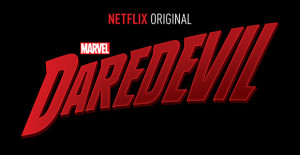
First who is Daredevil
Daredevil is a second-tier Marvel hero, who hasn’t enjoyed the success or popularity of Spiderman or the X-Men, nor is he as integral to the universe as Iron Man or Captain America. First off he’s kind of hard to explain. He’s not a Norse God, or a man in a Iron Suit, or a Super Solder. He’s actually a blind guy. Matt Murdock was in an accident when he was young wherein toxic chemicals sprayed onto his eyes, leaving him blind. As time went by he began to realize that his other senses were heightened and that by focusing he had a sort-of sixth sense (there are actually more than five senses anyway as mentioned in the series, but that’s another blog entry) that works a lot like radar. So while he is still effectively blind, he can hear, smell, taste, and feel so well that he can detect specifics about the people on the floor above him, tell if someone is lying, and sense an attacker’s adrenaline pumping, giving him a near precognitive ability to sense attacks. In addition, his inner ear is also extremely balanced, making him very good at acrobatics and extremely agile.
Matt’s father was a boxer in New York, where he grew up in the real-life neighborhood of Hell’s Kitchen, which despite the name, is actually now quite a pleasant place to live due to a number of re-gentrification movements that have taken place in the area since the creation of the character in the 60s. Anyway, Matt’s dad wasn’t a great boxer, but even if didn’t win many fights he was never beaten by a knock-out, only a TKO. “Battling Jack Murdock” was known for being able to take a beating and stay standing. Matt’s father refused to take the fall in a fight and was killed for his honesty. Shortly thereafter a man named “Stick” found Matt in an orphanage. Stick was a member of a group of blind martial artists, who believed that sight only offered distraction and used their enhanced senses to best their opponents. Stick became a father figure to young Matt Murdock and he trained him to hone his abilities.
Matt, wanting to fight the kind of corruption and injustice that led to his father’s death, decided that he wanted to become a lawyer to stand up for the little guy. He wanted to stay in his neighborhood and with the help of his business partner and friend, Foggy Nelson, he started the Nelson and Murdock law firm. Any description of the character of Matt Murdock would not be complete without a discussion of his faith. While many superheros are vaguely protestant (Superman is Methodist, as specified in action comics #850) Daredevil’s Christian, Catholic faith is a foundational part of his character. It’s no mistake that both this new version of Daredevil and the 2003 Movie have early scenes of him in confessional.
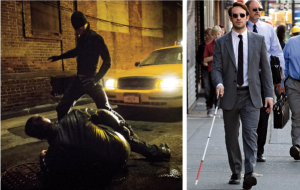
So there you have it. Lawyer by day, Superhero by night, blind all the time, and fundamentally Catholic.
My Disappointments
I’ve already been berated by fan-boys who loved the series immediately for having a less-than stellar opinion of the new series. That isn’t to say that I don’t think it is very good, but I do feel that I need to say that I was disappointed in one major way. This is the third TV series in the already enormous Marvel cinematic universe that includes all the characters in the eight various Avengers films, Guardians of the Galaxy, Agents of SHIELD, Agent Carter, as well as the upcoming Ant Man, Black Panther, Doctor Strange, and Inhumans films in addition to the pending Jessica Jones, Defenders, and Luke Cage Netflix series. Up to this point all of the films and TV series have had the same sensibility; they don’t take themselves too seriously and they have fun. Humor is a huge element in all of the Marvel films up to this point, and even in the Agents of SHIELD television show. The violence in these films has always had a measure of un-reality to it that gave it the feel of a comic book movie; so no matter if the world or galaxy is in danger, the stakes are low and the fun is high. Daredevil is the first to break from this world which bothers me on two levels: I personally prefer the “fun” over the realistic. If I wanted realism, I’d live my life. More bothersome than that, however is that this is actually a problem for the cinematic universe. The reality presented in Daredevil is totally inconsistent with the rest of the world it proposes to be in. Some will not be bothered by this, but it upsets me because it marks the end of the continuity that has been so great within the MCU up to this point.

EWW!
What is the difference? Well Daredevil is trying to reach out to fans of HBO series by having a show with the kind of extreme violence you’d expect from an R-rated film. Things like characters impaling themselves on rusty fence posts, a bad guy beheading someone with a car door, a guy’s head getting crushed with a bowling ball, and lots of cuts, and punches that draw blood like a Tarantino film. This is one of the most violent TV show’s I’ve watched. I’m certain that the production team had a tanker of fake blood ordered for this season. Every opportunity they get, someone is bleeding from the mouth. Every time someone punches someone, they have to do it twice as much as they usually do. A friend pointed out the Foley effects, that is the sound effects that relate to humans, is louder and more visceral. The enhanced sounds make the hits seem harder, the cracking of bones and spurting of blood all the more agonizing. I wonder if part of this was to put us in Matt Murdock’s shoes, who perceives the world based more on sound than the visual.
 Yes, fans of the comic tell me that this level of violence is consistent with the comics, but I would argue that reading a comic with cartoon-depicted fights cannot ever reach the same level of visceral impact that watching a bloody fistfight happen on screen between real people. Red ink is very different from looking at a person covered in what appears to be real bloo as it seeps out of their mouths and from wounds all over their bodies. I was still hoping for an interpretation of Daredevil that didn’t take the darker tones, but had that lightheartedness that we get from Iron Man or Guardians.
Yes, fans of the comic tell me that this level of violence is consistent with the comics, but I would argue that reading a comic with cartoon-depicted fights cannot ever reach the same level of visceral impact that watching a bloody fistfight happen on screen between real people. Red ink is very different from looking at a person covered in what appears to be real bloo as it seeps out of their mouths and from wounds all over their bodies. I was still hoping for an interpretation of Daredevil that didn’t take the darker tones, but had that lightheartedness that we get from Iron Man or Guardians.
As such this is NOT for children. I wouldn’t have much of a problem watching the Avengers, or Agents of Shield with a ten-year-old, I wouldn’t suggest this for kids younger than 15. It is very intense and not just because of the violence. The entire world is bleak. The bad guy is also more complex and at points, seems arguably more sympathetic than the “hero.” Also, this probably won’t entertain kids. There were many moments where it wasn’t very entertaining to me. Between the extreme violence there are many long scenes where characters are talking, often in other languages – requiring me to read subtitles, and offering the very serious dialogue that sometimes makes me feel like I’m watching an episode of law and order rather than a show about a superhero. There’s almost two full episodes where Matt is sitting on the couch after a particularly bad beating, during which there is little-to-no action. I’m all for character development, but I’m watching an action/adventure series here. Even some of the more action-packed scenes can get a little boring; there’s an entire episode where Matt is trapped in a building with someone he’s trying to get information from. There’s another one where the only action sequence takes place at the end of the plot, so they break it up across the episode, which only makes for really disjointed storytelling.
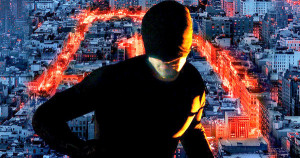
Matt Murdock as “The Masked Man” in this first season he doesn’t dawn the familiar red costume until the last episode.
The likability of the characters is occasionally an issue in this series as well. Most of the characters a likable, but also a little annoying. There’s no one that you look at and feel like they’re someone you really enjoy watching all the time. Matt is generally likeable, though we go through periods of time where you question his logic (instead of getting the dying dirty cop to give you “information” about his boss, why not get a confession on record?) Foggy is likable most of the time, but there are times where his not knowing Matt’s secret identity really makes him a frustratingly ignorant voice. Also he has some lines that are clearly intended to be humorous that don’t quite land. Karen is likable except you don’t really understand why she doesn’t feel free to tell Foggy and Matt what she’s up to in the background, as she investigates with Ben, the reporter. Ben is a likable character, but it’s questionable that we need him in the story. He’s one of a handful of characters that make the whole thing feel like there are a few-too-many characters in the series. Or, at least that they’re trying too hard to check in with all of them regularly.
The BIG Upside (for me, at least)
The saving grace for the show is Matt’s faith. This is the only thing that grounds the show in a reality with which I can identify. The reason for all this bleakness? In the reality of Daredevil, unlike other comic book worlds, God exists. As such, people are imperfect like they are in the real world while God is perfect and is looking out for them. How does this play into the series? Well as I mentioned above, Matt Murdock is a devout Catholic, and he visits with his priest several times. While the priest only appears in four episodes, he is heavily featured in one that is especially interesting. Whereas most pastors or priests are often depicted as bumbling at best and devious at worst, the priest might be the only truly “good” character in the whole bunch. He is smart, he’s the only one who is able to intuit that Matt is the “masked man.” He’s loving, He’s aware of what’s going on outside the walls of his church, and he actually seems to know scripture. He reminds Matt that “vengeance is the Lord’s.” And he calls Matt on his continual questioning about whether it would be wrong to kill someone, asking “Is it that you don’t want to take a man’s life but you fear you have to, or is it that you shouldn’t take a man’s life, but you want to?”
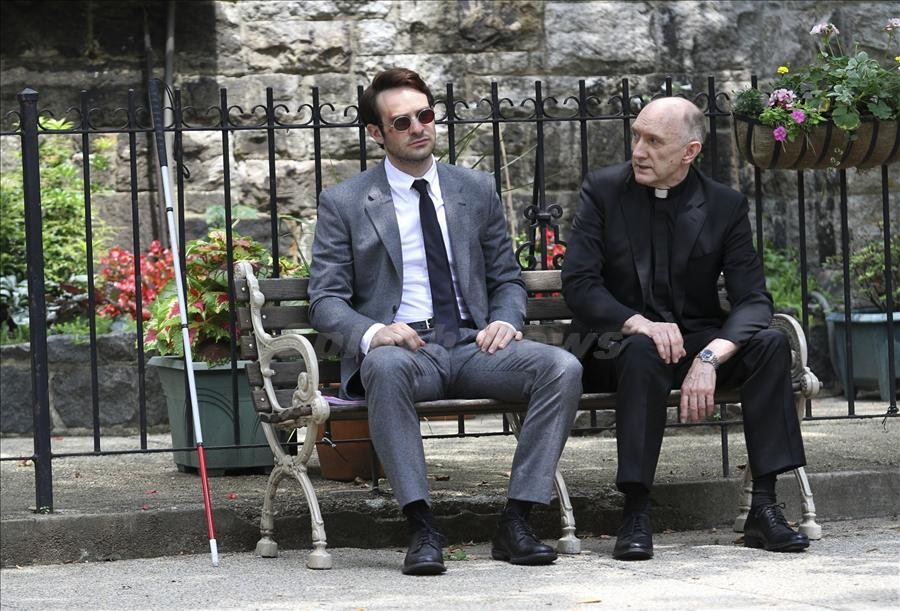 There is a large on-going discussion with the priest about right and wrong, good and evil, and God’s will. The most interesting point to me comes in a scene where Matt asks the priest if he believes in the Devil. He starts by making the (reasonably accurate) assertion that the language that refers to the Devil in scripture is somewhat ambiguous at times as to whether it’s referring to a specific person or a more amorphous idea of an “adversary.” He says when he was young he believed that medieval theologians just combined all these ides into one character. But then he goes on to say that years later when he was a missionary in Rwanda he saw a local, peaceful and well-respected priest brutally murdered along his entire family by a guerrilla militia captain in front of his entire village. He said in that moment he saw the Devil, “So yes, I believe he walks among us, taking many forms.”
There is a large on-going discussion with the priest about right and wrong, good and evil, and God’s will. The most interesting point to me comes in a scene where Matt asks the priest if he believes in the Devil. He starts by making the (reasonably accurate) assertion that the language that refers to the Devil in scripture is somewhat ambiguous at times as to whether it’s referring to a specific person or a more amorphous idea of an “adversary.” He says when he was young he believed that medieval theologians just combined all these ides into one character. But then he goes on to say that years later when he was a missionary in Rwanda he saw a local, peaceful and well-respected priest brutally murdered along his entire family by a guerrilla militia captain in front of his entire village. He said in that moment he saw the Devil, “So yes, I believe he walks among us, taking many forms.”
This may seem like a something peripheral to Christianity, but it is very important. Today’s popular philosophy is to destroy or at lest stridently discount any notion of the existence of absolute evil. In the church it often takes the form of rewriting the intentions of scripture by discounting the many great theologians that have come before us, and acting as if we know better today. It shows that priest realizing that the collections of references to an enemy weren’t made into one person, but rather they were discovered to have been referring to the same person. It actually discusses an important theological topic on a popular TV show with reasonable respect for Christian orthodoxy.
The Priest isn’t the only one discussing matters of faith. Throughout the series Matt brings up God, God’s will, and God’s gifts. While he is often frustrated or even angry with God, he trusts and believes in Him. It’s a constant and very real tension that Matt believes his gifts are from God, but struggles with knowing how to use them, and what God’s will is. He also prays and makes the sign of the cross before putting his outfit on.
What’s more is that the bad guy, Wilson Fisk, AKA “The Kingpin” states two different times that he is not a man of faith. The second time he makes this assertion is toward the end of the last episode wherein he then tells the story of the good Samaritan, explaining that he used to believe he was the the good Samaritan, but now he realizes that he is “the ill-intent” who attacked the man on the road that day. Murdock and Fisk have similar back-stories, as we see, but one became the enemy he was trying the fight and carries guilt with him everywhere, and the other humbly protects people from the shadows. We’re offered the possibility that the primary difference between the two is their faith.
a few more thoughts
There is a real sense in which this is not a superhero series at all. Similar to “The Dark Night” it’s a crime story, a detective story first. The scale is much smaller than what we see in most marvel films, as it takes place in one neighborhood on Manhattan. The small scale only adds to the grittiness of it. There’s a sense in which it’s about real world problems of drugs, human trafficking, gangs, politics, and corruption. This is another reason why I’m not a huge fan of the series. If I wanted these kinds of issues I could watch almost any police procedural. Some however have reacted to the opposite. Lost of guys really respond to the raw, dark realism. There is a very noir sensibility to it both in the flavor of the plot and in the way it is photographed. If you want to watch a series about a super hero, watch the Flash on the CW. It’s just a fun superhero TV show. This is not that at all. This is a painful walk through a very real world that is intended to make you stop and ponder right and wrong. It is also slower than many superhero shows, which I can’t decide if it is exacerbated by the fact that it’s available to watch all at once, or if that helps alleviate the problem. While many shows have bottle episodes, that is episodes that take place on established sets to save money, usually in the middle of the season and often taking place entirely in one room, there is a sense in which the whole season feels bottled when compared to the larger scale of other marvel movies. Even some of the more action packed episodes are cooped up in a single location.
Is it a good show? Someone just asked me this question and I said “that’s a complicated question.” They then asked me if they would like it, and that is less complicated. If you like violent action, then you will like this series. If you like slow-burn plot where people in suits make veiled threats toward each other, then this is your series. If you don’t mind a large portion of the plot examining the life of the bad guy, you might like this series. If you don’t like the marvel movies up to this point, because they’re not real or gritty enough, I’d say give this one a try. If you liked Dark Knight, then you’ll probably like this one.
If however, you don’t like seeing lots of blood you will probably not like this. If you want your plot to move quickly, straight forward to the resolution you won’t enjoy this. If you need a little more than a drop of comic relief, I’d say skip this one. If you get tired of long scenes where bad guys are talking to each other about subplots that will have no effect on the larger story then you won’t enjoy this show. If Captain America, Iron Man, or Guardians, rank among your favorite movies – this might be a bit much for you. If you thought “Dark Knight” was a bit too dark, then I don’t recommend this series.
Is it a good show? Arguably, yes. But it’s not for families with kids. It’s not as broad-appeal as I believe the Avengers is, and it definitely isn’t aiming for the same audience. I’d be curious to see where they would take it in a second season, but the basically happy ending of this first season almost makes me wish they’d stop now and perhaps bring Daredevil into a few guest appearances of other Marvel shows. It definitely has a few fun moments though, if only in the last episode. So, if you’re into this kind of dark action, check it out – it has some good truth to it.
